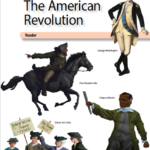International Women’s Day has been commemorated across the world on March 8th since 1911 and every U.S. President has marked March as Women’s History Month since 1995. While the right to vote is a common topic of study in classrooms when examining women’s history, there are many more issues, perspectives, and accomplishments that require investigation across history, literature, and the arts to more fully appreciate and understand what women’s history in the U.S. encompasses. Our Teacher’s Guide provides compelling questions, lesson activities, resources for teaching about the intersection of place and history, and multimedia resources to integrate women’s perspectives and experiences throughout the school year.
Native American Cultures Across the U.S.
Teaching children about the First Americans in an accurate historical context while emphasizing their continuing presence and influence within the United States is important for developing a national and individual respect for the diverse American Indian peoples, and is necessary to understanding the history of this country.
The American Revolution (CKHG Unit)

This unit begins by providing background information on the establishment of the thirteen colonies. Across 25 lessons, students learn about early alliances, the French and Indian War, and causes and provocations of the American Revolution. Students are introduced to major ideas in the Declaration of Independence and to key figures in the Revolution, as well as art and literature representative of the period.
Includes 25 lessons of roughly 45 minutes each.